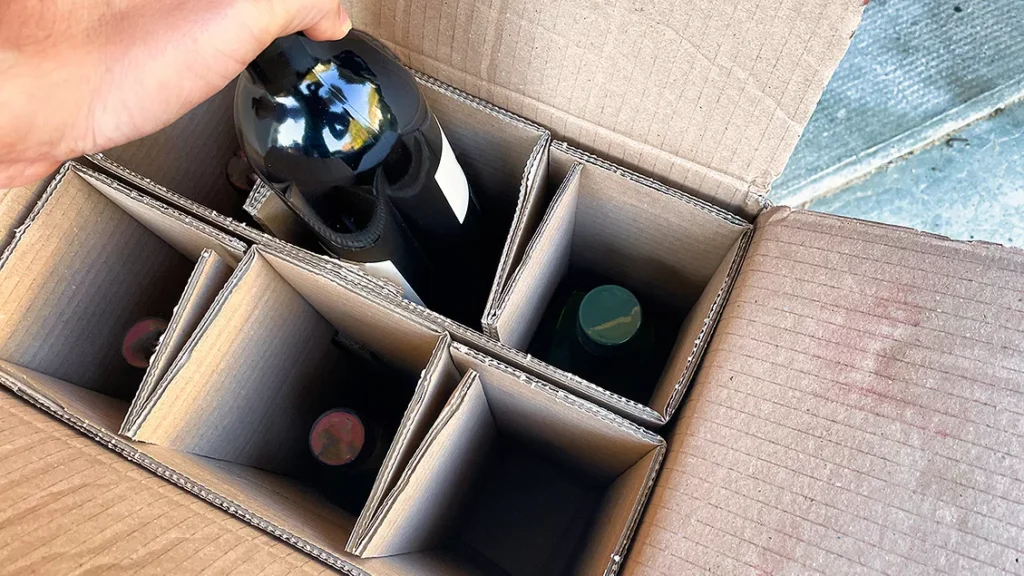How do you deal with an issue that’s millennia outdated ― and nonetheless getting worse?
For so long as individuals have loved wine, fraudsters have diluted it, blended it with inferior merchandise and claimed it was one thing it wasn’t. And nowadays, with the assistance of expertise, legal organizations can’t solely pretend the wine itself, but in addition bottles, labels, corks and capsules which can be in any other case the hallmark of revered wine manufacturers.
However expertise cuts each methods, and the wine trade has new instruments up its sleeve to combat fraud. As a result of as the issue of wine counterfeiting turns into greater, the trade wants higher, sooner, extra correct strategies to remain forward of counterfeiters.
It’s generally estimated that 20% of wine in circulation is counterfeit, although some imagine the determine is greater. Though it is a well-documented drawback within the luxurious sector the place premium wines will be bought for hundreds of {dollars}, it’s additionally straightforward to pretend $100, $50 or $30 wines at scale and switch a tidy revenue. Not solely does counterfeiting reduce into legit enterprise, however it may well do actual injury to a vineyard’s, reseller’s, or public sale home’s model picture.
The subsequent evolution in wine authentication brings the product on-line, utilizing the Web of Issues (IoT) to hyperlink every bottle to a safe digital identification. That identification, in some circumstances, even contains scientific verification of the contents, made doable via microscopic extraction, molecular profiling and AI-powered comparability in opposition to recognized reference samples.
Mixing artwork and science
Traditionally, wine authentication has been extra artwork than science. Specialists skilled in label design, capsule supplies, glass bottle traits, and closure ageing have lengthy been known as upon to confirm luxurious wines via meticulous visible examination.
However right this moment’s counterfeiters are refined, world actors with entry to mass manufacturing capabilities, authentic-looking packaging and cast documentation. Some even refill empty genuine bottles and resell them with convincing provenance.
In a high-stakes, high-value market, visible inspection alone is now not sufficient. That’s why the trade is popping to science ― particularly, chemical profiling ― to confirm what’s contained in the bottle. As soon as verified, the bottle will be digitized using an embedded IoT tag, enabling authentication and traceability throughout the product’s lifecycle.
However turning a glass bottle into a wise, data-sharing product poses distinctive technical challenges, and fixing them is what makes the subsequent layer of this method doable.
Bridging glass and information: The function of IoT
Wine will be difficult to digitize for a number of causes. It’s liquid (which might confuse wi-fi transmissions), is available in glass bottles, which will be arduous to tag, and is perishable, which suggests further information, like temperature or humidity, additionally can be vital.
As such, the connection between the bodily and digital worlds comes within the type of a specialised IoT inlay, a compact, safe gadget embedded with a microprocessor, reminiscence, radio antenna and, in some circumstances, tamper-evident sensors.
Corporations like Identiv focusing on radio frequency identification (RFID) and near-field communication (NFC) ― two wi-fi requirements suitable with on a regular basis readers ― allow producers, resellers and certifiers to tag bottles in a approach that maintains each kind and performance.
These discreet, safe tags embed a layer of intelligence instantly into the product, permitting bottles to speak wirelessly with smartphones or readers. The result’s real-time entry to information on authenticity, dealing with situations, environmental publicity, and extra.
When paired with scientific testing from firms like Real-Analytics and safe digital infrastructure from platforms like ZATAP, this ecosystem turns into the spine of a extra clear wine market: one the place authenticity will be verified immediately, provenance will be authenticated end-to-end, and belief isn’t only a matter of opinion, however of proof.
The way forward for wine authentication
Though early functions have centered on six-figure wines and high-end auctions, fraud is now not confined to uncommon, ultra-luxury bottles. In reality, in 2024, a legal operation in Switzerland was caught counterfeiting bottles of wine priced underneath 5 Swiss francs (lower than $6).
For producers of mid-tier or natural wines, authentication can turn out to be a solution to defend model integrity, particularly when third-party certifications (like “bio” or regional AOC standing) are concerned. For importers and retailers, it’s a way to show dealing with and storage situations all through distribution. For customers, it’s a gateway to transparency.
Maybe most significantly, simply as QR codes and traceability have reshaped meals, espresso, and cosmetics, wine is poised to supply a deeper, extra interactive relationship with consumers ― one constructed on verified belief.
By combining the rigor of lab-tested verification with the precision of digital authentication, wine producers, public sale homes and resellers can make sure that what’s contained in the bottle lives as much as what’s on the label ― each time.
Wine fraud may be as outdated because the drink itself, however the instruments to cease it have by no means been extra trendy, and the trade has by no means been higher positioned to make use of them.
